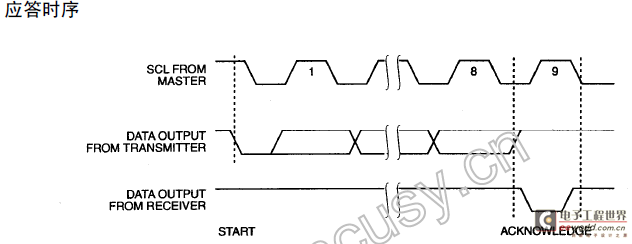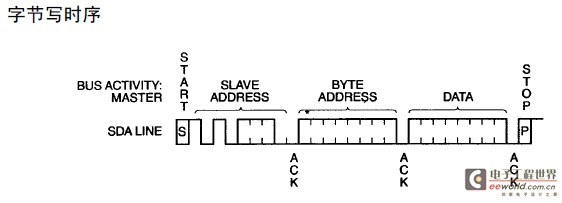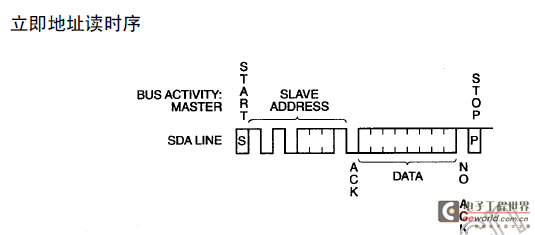24c16的使用方法
之前看pcf時發(fā)現(xiàn)其實有很多芯片和24c系列的芯片很像,所以就不得不整理一下了,發(fā)辮以后回顧
r如果整理的不夠好,請不要噴我,我是弱菜







#include
#include
#define uchar unsigned char
#define uint unsigned int
sbit scl=P2^1;//24c16時鐘線,數(shù)據(jù)線定義
sbit sda=P2^0;
uchar code table[]={0xc0,0xf9,0xa4,0xb0,0x99,0x92,0x82,0xf8,0x80,0x90};//數(shù)碼管顯示
uchar num,sec; //用來計時
void usdelay()
{
_nop_();_nop_();
_nop_();_nop_();
_nop_();_nop_();
}
void delayms(uint z)
{
uint x,y;
for(x=z;x>0;x--)
for(y=110;y>0;y--);
}
void start() //起始信號
{
sda=1;
usdelay();
scl=1;
usdelay();
sda=0;
usdelay();
}

void stop()//終止信號
{
sda=0;
usdelay();
scl=1;
usdelay();
sda=1;
usdelay();
}
void ack() //應(yīng)答信號由從機發(fā)出信號為sda由1變?yōu)?
{
uchar i;
scl=1;
usdelay();
while((sda==1)&&i<200)i++;
scl=0;
usdelay();
}

void init24c16()//24c16初始化
{
sda=1;
usdelay();
scl=1;
usdelay();
}
void write_byte(uchar dat) //字節(jié)寫(寫數(shù)據(jù)或地址)數(shù)據(jù)線sda不變,scl有個上升沿,寫入數(shù)據(jù)
{
uchar i;
for(i=0;i<8;i++)
{
scl=0;
usdelay();
sda=(bit)(dat&0x80);
usdelay();
scl=1;
usdelay();
dat<<=1;
}
scl=0;
usdelay();
}


uchar read_byte()
{
uchar i,k;
for(i=0;i<8;i++)
{
scl=1;
usdelay();
k=(k<<1)|sda;
scl=0;
usdelay();
}
return k;
}
void write_add(uchar add,uchar dat)
{
start();
write_byte(0xa0);
ack();
write_byte(add);
ack();
write_byte(dat);
ack();
stop();
}


uchar read_add(uchar add)
{
uchar dat;
start();
write_byte(0xa0);
ack();
write_byte(add);
ack();
start();
write_byte(0xa1);
ack();
dat=read_byte();
usdelay();
stop();
return dat;
}

void main()
{
init24c16();
sec=read_add(2);
if(sec>9) sec=0;
TMOD=0x01;//定時器選擇軟件啟動,工作方式為1
ET0=1;//開定時器0允許
EA=1;//開總中斷允許
TH0=(65536-50000)/256;
TL0=(65536-50000)%6;//給定時器賦初值,定時50ms
TR0=1;//啟動定時器0
while(1)
{
if(num==20)
{
num=0;
sec++;
if(sec>9)
sec=0;
}
P3=table[sec];
write_add(2,sec);
}
}
void t0() interrupt 1
{
TH0=(65536-50000)/256;
TL0=(65536-50000)%6;
num++;
}



評論